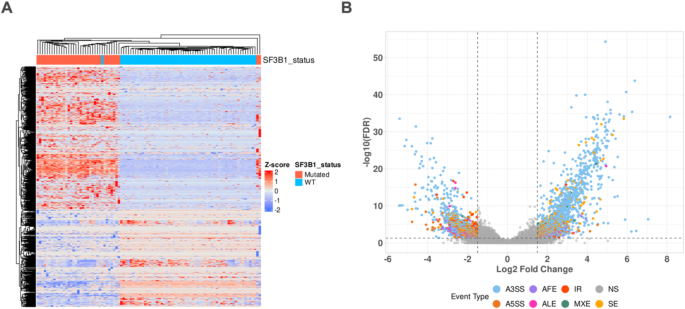BMC Oral Health volume 25, Article number: 466 (2025) Cite this article
This study aimed to analyze the efficiency of oral health resource allocation in public medical institutions in Yunnan Province at the end of the 13th Five-Year Plan period in China. The findings will provide a theoretical basis for the government and health administration departments to formulate regional medical and health plans and adjust policies and systems. Additionally, tailored recommendations will be proposed to optimize the allocation of oral health resources in public medical institutions in Yunnan Province and enhance resource utilization efficiency.
The present investigation scrutinizes the prevailing distribution of oral health resources within public institutions situated in Yunnan Province, marking the culmination of the 13th Five-Year Plan era. Employing cross-sectional analysis, the study utilizes conventional BCC and CCR models of Data Envelopment Analysis (DEA), alongside the super-efficiency SBM model, to assess the efficacy of resource allocation across 16 prefectures (or cities) within the province.
In the conventional model analysis, the average technical efficiency (TE) of oral health resource allocation in 16 prefectures (or cities) of Yunnan Province at the end of the 13th Five-Year Plan was 0.867, with an average pure technical efficiency (PTE) of 0.914 and an average scale efficiency (SE) of 0.950. Out of the 16 decision-making entities, 2 exhibit effectiveness according to DEA standards, 2 demonstrate weak effectiveness, while 9 manifest ineffectiveness. In the SBM super-efficiency model analysis, the TE of the whole province was 0.820, accompanied by an average PTE of 1.110 and an average SE of 0.863. Five prefectures (or cities) attained super-efficiency effectiveness, with Kunming City (the provincial capital of Yunnan) distinguishing itself notably owing to substantial disparities in PTE (3.840) and SE (0.293).
On the whole, the efficacy in leveraging oral health resources within public medical institutions throughout Yunnan Province was deemed relatively commendable. Nonetheless, notable disparities among prefectures (or cities) persisted, characterized by an excessive concentration of premium resources. Ineffective resource utilization coexisted with inadequate distribution. It is recommended to customize the distribution of oral health resources in each area according to local conditions, facilitate the decentralization of premium resources, and enhance the capacity of oral medical services.
Oral health exerts a profound influence on overall well-being and quality of life, with oral diseases emerging as a pressing global public health issue [1]. Data from the 2017 Global Burden of Disease study indicate that roughly 1.06 billion individuals worldwide endure dental caries in their deciduous teeth, while approximately 2.45 billion are affected by dental caries in their permanent dentition. Over the decade from 2007 to 2017, the untreated prevalence of dental caries decreased by only 2.1% for primary teeth and 4% for permanent teeth [2]. Findings from the Fourth National Oral Health Survey of China in 2015 [3] unveiled that the prevalence of oral diseases, encompassing dental caries and periodontal ailments, surpasses 90% within the nation. On a global scale, expenditures directly attributed to oral disease treatment amounted to $356.8 billion in 2015, with indirect costs stemming from productivity losses due to work and school absenteeism reaching $187.61 billion. The United States ranked highest in direct expenditures ($119.07 billion), followed by China ($60.11 billion) [4]. The financial burden of oral diseases is substantial not only in low- and middle-income countries but also in economically developed nations. Oral diseases exert a profound impact on individuals’ physical and mental well-being and quality of life, imposing substantial burdens on families and societies, thereby underscoring their status as critical public health and social concerns.
Oral health services play a pivotal role in the prevention and treatment of oral diseases, the restoration of oral function, and the maintenance of overall oral well-being [5]. Adequate oral health resources are necessary for delivering these services and diagnosing and treating oral conditions. Scholarly interest in oral health resources dates back to the 1930s, with scholars in countries like the UK and the US [6] focusing on the allocation of oral health manpower resources. In the 1990s, the World Health Organization (WHO) developed dental workforce prediction models and software [7] to forecast optimal dentist-to-population ratios for forthcoming periods. Recent studies highlight the uneven global distribution of oral health human resources [8]. Effective allocation of healthcare resources seeks to maximize the utilization and scale of finite resources to address adequacy, quality, and effectiveness of healthcare services, ultimately meeting the needs of individuals satisfactorily.
Data Envelopment Analysis (DEA) is an efficiency assessment technique grounded in the concept of relative efficiency [9]. It consists of decision-making units (DMUs), performance indicators (input and output indicators), and linear equations. DEA is regarded as an optimal method for assessing both technical efficiency and scale efficiency [9]. DEA, as a non-parametric estimation technique, is not bound by data distribution patterns. It permits the simultaneous consideration of multiple input and output metrics for DMU, rendering it suitable for analyzing healthcare resources with varied inputs and economic and social outcomes. In recent times, DEA has garnered attention in efficiency evaluation studies within the healthcare domain [10].
Although scholars have extensively scrutinized the efficiency of oral health resources, disparities in healthcare systems and institutional frameworks prevail across nations. In Europe and America, efficiency analyses primarily target community-based public dental healthcare services [11, 12]. For instance, Miika Linna et al. [13] employed DEA to scrutinize production efficiency within Finland’s public dental healthcare services, unveiling notable discrepancies among health centers across diverse municipalities. Chrystalla Charalambous et al. [11] conducted non-parametric DEA analysis on public dental healthcare services in Cyprus and the influencing factors. Buck D [14] evaluated the efficiency of community dental service provision by health authorities in the UK using DEA. In China, public medical institutions serve as the primary pillar of the healthcare service system. Although substantial international research has been conducted on the efficiency of dental health resources, studies addressing the rational allocation and efficiency evaluation of healthcare resources in China—particularly in the context of public medical institutions—remain notably scarce, especially regarding regional distribution, utilization, and efficiency assessment.
The Chinese government’s ‘Five-Year Plans’ are crucial for shaping national economic and social development, with the healthcare development plan as a core component. The 13th Five-Year Plan (2016–2020) [15] introduced the “Healthy China” initiative, focusing on disease prevention, resource optimization, and service equity. Oral health services are a priority. Despite progress, gaps remain in research on resource accessibility, equity, talent shortages, and policy effectiveness, especially regarding resource distribution, utilization, and efficiency.
Yunnan Province, situated in the southwestern border of China, has achieved notable progress in the allocation of healthcare resources following the implementation of the 13th Five-Year Plan. However, challenges of uneven development and resource distribution persist. This study aims to answer the following questions: How efficient is the allocation of oral health resources in public medical institutions in Yunnan? What deficiencies exist, and how can they be optimized? To address these, the study uses Data Envelopment Analysis (DEA) to evaluate the efficiency of oral health resource allocation across 16 prefectures (or cities) in Yunnan, identify key factors, and explore optimization strategies.
This study conducts a cross-sectional survey utilizing a census approach, aimed at scrutinizing the distribution and allocation of oral health resources among diverse tiers and classifications of public oral medical institutions spanning 16 prefectures (or cities) within Yunnan Province. Furthermore, this investigation seeks to appraise the effectiveness of the allocation of oral health resources.
The dataset pertaining to oral health resources originates from the “Survey of Specialized Dental Services in Yunnan Province,” administered towards the culmination of the 13th Five-Year Plan period, which on January 1, 2020. The specific details of the survey form are provided in Supplementary Material 1. This inquiry was authorized by the Yunnan Provincial Health Commission and spearheaded by the Provincial Center for Quality Control in Oral Disease Medical Care in collaboration with the Provincial Dental Association of Yunnan. All data utilized in this study were acquired directly from public oral medical institutions via online questionnaires, with the institutions assuming responsibility for data registration procedures.
DEA is a non-parametric method used to evaluate the relative performance of multiple DMUs in terms of resource utilization efficiency. It is particularly suited for comparing relative efficiency between similar DMUs, rather than assessing absolute efficiency. DEA does not require a pre-defined production function, making it ideal for analyzing small sample data. Additionally, it constructs efficiency frontiers through comparisons across DMUs, reducing the overemphasis on small sample sizes. The two main approaches in DEA are input-oriented (minimizing inputs for a given level of outputs) and output-oriented (maintaining inputs while proportionally increasing outputs) [16]. This study adopts an input-oriented approach, as suggested by some literature [17], since hospitals generally have more control over inputs than outputs.The mathematical formula is as follows:
$$\:\begin{array}{rr}&\:\:\text{m}\text{i}\text{n}\theta\:-\epsilon\:\left(\sum\:_{i=1}^{m}\:\:{s}_{i}^{-}+\sum\:_{r=1}^{s}\:\:{s}_{r}^{+}\right)\\\:&\:\end{array}$$
subject to:
$$\:\sum\:_{j=1}^{n}\:\:{x}_{ij}{\lambda\:}_{j}+{s}_{i}^{-}=\theta\:{x}_{i0}i=\text{1,2},\dots\:,m\\$$
$$\:\:\sum\:_{j=1}^{n}\:\:{y}_{rj}{\lambda\:}_{j}+{s}_{r}^{+}={y}_{r0}r=\text{1,2},\dots\:,s$$
$$\:{\lambda\:}_{j}\ge\:0j=\text{1,2},\dots\:,n$$
DEA models commonly utilized fall into two categories: ① CCR Model: This model primarily evaluates the overall efficiency of DMUs, yielding Technical Efficiency (TE) or Comprehensive Efficiency as outcomes. It offers a comprehensive assessment of various capacities of the DMUs, encompassing resource allocation and utilization efficiency. ② BCC Model: This model dissects the TE of DMUs into two components: Pure Technical Efficiency (PTE) and Scale Efficiency (SE), where TE = PTE × SE. A TE value of 1 indicates DEA efficiency, values below 1 signify DEA inefficiency, with lower values denoting diminished relative efficiency; when PTE = 1 and SE < 1, it signifies suboptimal DEA efficiency [18]. In this investigation, the 16 municipalities within Yunnan Province will be designated as DMUs. Each city will have a frontier surface established concerning the utilization of oral health resources within public oral healthcare establishments to scrutinize the relative efficiency of oral health resource allocation among public oral medical institutions across municipalities and evaluate their resource allocation and utilization statuses.
The traditional DEA model assigns an efficiency score of 1 to efficient DMUs, which limits their ranking and further analysis. Differentiating efficient DMUs is essential for efficiency ranking and analyzing influencing factors [18, 19]. To address this limitation, the super-efficiency SBM model, introduced by Tone [20] and Sahoo [21], extends the traditional DEA model. This model allows for further evaluation of efficient DMUs by assigning scores greater than 1, enabling a more comprehensive efficiency assessment. The mathematical model is presented as follows:
$$\:{\theta\:}_{i}=\frac{\sum\:_{r=1}^{s}\:\:{y}_{ri}}{\sum\:_{j=1}^{m}\:\:{x}_{ji}}\:\:\text{s}\text{u}\text{b}\text{j}\text{e}\text{c}\text{t}\:\text{t}\text{o}\:\:{S}_{j}\ge\:0,{S}_{r}\ge\:0$$
• \(\:{S}_{j}\) is the slack variable for the \(\:j\)-th input (indicating excess or shortage of input).
• \(\:{S}_{r}\) is the slack variable for the \(\:r\)-th output (indicating excess or shortage of output).
The fundamental principle of this model is to exclude the evaluated DMU from the reference set and determine its efficiency by comparing it to the frontier established by other DMUs. The super-efficiency score of an efficient DMU typically exceeds 1, allowing for comparison and differentiation among efficient DMUs. To further assess the efficiency levels of efficient DMUs, this study will use the super-efficiency SBM model for quantitative ranking and analysis.
The results of the DEA model analysis are contingent upon the relationship between the number of DMUs and the corresponding input-output indicators. When choosing input and output indicators for DEA analysis, it is paramount to weigh their representativeness, conciseness, correlation, and accessibility. While meeting analysis requirements, minimizing the number of selected indicators is crucial to control the quantity of effective DMUs. While DEA does not provide absolute standards for the number of DMUs and indicators, improving model differentiation usually entails ensuring that the number of DMUs is at least three times the total of input and output indicators and not less than the product of input and output indicators [22, 23]. Put simply, the number of DMUs should be equal to or exceed the larger value between the product of input and output indicators or three times the sum of input and output indicators.
In this investigation, following the principles and criteria mentioned above and taking into account the specifics of oral health resource allocation in public institutions within Yunnan Province, along with practical resource allocation, data accessibility, and pertinent literature, a definitive set of indicators was selected through expert consultation: three input indicators and two output indicators were adopted for DEA efficiency analysis (as illustrated in Table 1).
Survey forms were systematically collected through the “Yunnan Provincial Medical Institutions Discipline Survey System”. Subsequent to collection, the data underwent meticulous screening, summarization, and organization in Excel spreadsheets. Statistical analysis was then conducted using SPSS 27.0, DEAP 2.1, and MaxDEA Ultra 8 software packages.
Table 2 presents the descriptive statistics pertaining to the input and output variables as of January 1, 2020. Table 3 presents the correlation analysis of the input and output indicators.
According to the survey findings presented in the table, the 634 public oral medical institutions across 16 prefectures (or cities) in Yunnan Province collectively possess 3,286 dental treatment chairs and oral and maxillofacial surgery beds. These institutions employ 1,799 certified dental practitioners and 1,036 registered dental nurses. In 2019, the total revenue from oral medical services reached ¥1,255,182.3 million, serving a total of 4,509,354 patients. Regarding the input and output indicators, Kunming City exhibits the highest levels of both input and output, while Nujiang records the lowest input, and Diqing demonstrates the lowest output.
The Spearman correlation test was performed on the input-output indicator system using the data. The correlation coefficients between the input and output indicators were all greater than 0.9, indicating strong correlations. Therefore, we will proceed with the next phase of the efficiency analysis.
The efficiency scores and returns-to-scale characteristics of oral health resource allocation across 16 prefectures (or cities), as determined by the conventional DEA model are presented in Table 4.
Among the 16 prefectures (or cities) in Yunnan Province, 5 prefectures (or cities) demonstrate effective oral health resource allocation in public institutions according to the DEA analysis, accounting for 31.25% of the province. Additionally, 2 prefectures (or cities) display weakly effective allocation, representing 12.5% of the province. Conversely, the remaining 9 prefectures (or cities) exhibit ineffective allocation, constituting 68.75% of the province.
In the 5 prefectures (or cities) exhibiting DEA-effective allocation, both the TE, PTE, and SE of oral health resource allocation attain a value of 1, with slack variables equal to 0. This indicates that these 5 prefectures (or cities) have attained a state of relative optimality concerning the input and output of resources under the present allocation of oral health resources, with both scale and technical resources being optimally utilized to maximize output.
In the 2 prefectures (or cities) demonstrating weakly effective allocation according to the DEA analysis, the PTE reaches 1, whereas both the TE and SE are below 1, with slack variables equal to 0. This indicates that while the PTE of these 2 prefectures (or cities) is relatively optimal in terms of management and service capacity, the inefficiency in TE and SE results from a discrepancy between their scale and input-output, suggesting increasing returns to scale. Especially in Diqing, where TE and SE are notably lower at 0.551, the current input-output exhibits relatively weak effectiveness due to comparatively low resource and scale input compared to the entire province.
In the 9 prefectures (or cities) exhibiting ineffective allocation according to DEA analysis, both the TE, PTE, and SE of oral health resource allocation are below 1, with not all slack variables equal to 0. Among them, Qujing, Honghe, Dali, and Wenshan manifest decreasing returns to scale, indicating that despite sufficient input of physical and human resources, these 4 prefectures (or cities) are not optimally utilized, resulting in relatively low utilization rates. Therefore, they require either a reduction in scale or increased resource utilization to improve efficiency. Conversely, the remaining 5 prefectures (or cities) demonstrate increasing returns to scale, suggesting insufficient input in terms of physical and human resources, leading to a mismatch between supply and demand. Hence, expanding the scale is necessary to enhance efficiency.
The specific instances of input redundancy and output deficiency for DEA-ineffective prefectures (or cities) calculated by the conventional DEA model are presented in Tables 5 and 6.
This study scrutinizes the distribution of oral health resources in 16 prefectures (or cities) of Yunnan Province, focusing on output perspectives.Leveraging the input-output efficiency values and slack variables of oral health resources in public institutions across the 16 prefectures (or cities) of Yunnan Province—where slack variables signify the gap between actual and ideal values—allows for the computation of ideal values [16] for oral health resource input and output for each city. Subsequent modifications are made to attain optimal input and output based on these ideal values.
Concerning input, all 9 prefectures (or cities) deemed ineffective by DEA manifest varying degrees of redundancy across three indicators. With regard to material input, 6 prefectures (or cities) exhibit redundancy in the input of dental treatment chairs and oral and maxillofacial surgery beds. Notably, Qujing and Honghe display relatively higher levels of redundancy. Regarding human resources input, 5 prefectures (or cities) each exhibit redundancy in the input of certified dental practitioners and dental nurses.
From the perspective of output, the nine DEA-inefficient prefectures (or cities) demonstrate varying degrees of deficiency in both total annual dental medical income and the total number of patients. This suggests that the utilization of available oral health resources in these nine public medical institutions is suboptimal. According to the efficiency value analysis, with the exception of Qujing City, the PTE of the remaining eight DEA-inefficient prefectures (or cities) is marginally lower than their SE.Specifically, Honghe Prefecture, Dali Prefecture, Wenshan Prefecture, Dehong Prefecture, and Xishuangbanna Prefecture have PTE values below 0.9, while their SE values remain relatively high.This indicates that these six prefectures (or cities) exhibit certain deficiencies in the management and utilization of oral health resources within public institutions.According to the projection analysis, significant resource wastage is evident, and the efficiency of existing oral health resource utilization requires improvement. The potential cause may be the relatively outdated treatment equipment and medical practices in grassroots healthcare institutions, resulting in the underutilization of existing resources.
The super-efficiency scores and returns-to-scale characteristics of oral health resource allocation in 16 prefectures (or cities), as determined by the SBM DEA model, are provided in Table 7.
The mean super-efficiency of allocating oral health resources in public oral medical institutions across the 16 prefectures (or cities) of Yunnan Province stands at 0.820, with 8 prefectures (or cities) achieving this average level, constituting 50% of the total. Regarding TE, only 5 prefectures (or cities) boast efficiency values ranging between 1.0 and 1.2, implying overall effectiveness, with the remaining 11 prefectures (or cities) being classified as ineffective.
Subsequent super-efficiency analysis was conducted to scrutinize the prefectures (or cities) identified as effective according to the conventional DEA model. The outcomes of the SBM super-efficiency analysis for these efficient prefectures (or cities) align with the results of the conventional model.
The overall efficiency rankings for these five prefectures (or cities) are as follows: Baoshan City, Yuxi City, Kunming City, Chuxiong Prefecture, and Lijiang City. Among them, Baoshan City and Lijiang City have TE and PTE values greater than 1, with SE values close to 1 (0.999) and increasing returns to scale, indicating optimal resource utilization efficiency. These regions could appropriately expand their scale to further optimize resource utilization and increase output. Yuxi City, Kunming City, and Chuxiong Prefecture, although having TE and PTE values greater than 1, show SE values below 1, indicating decreasing returns to scale. This suggests that these areas have superior technical capabilities, management, and service capacities compared to others. However, there is an over-allocation of human and material resources at the current scale, meaning that the scale has not achieved optimal output, especially in Kunming City. The significant gap between PTE and SE values indicates that, although Kunming City’s overall efficiency is effective, its technical and management capabilities surpass those of other prefectures (or cities), there remains an over-concentration of high-quality dental medical resources, leading to disproportionate resource allocation (see Fig. 1).
The radar chart of average efficiency scores for each city in Yunnan province
PTE Pure technical efficiency, SE Scale efficiency, TE Technical efficiency
Enhancing the efficiency of oral health resource allocation is of paramount importance, as it can lead to a reduction in government health expenditure and a bolstering of oral medical service capabilities. From this perspective, DEA emerges as a valuable analytical tool for scrutinizing the efficiency of resource utilization in healthcare. In this study, we undertook an initial investigation into the prevailing distribution and productivity of oral health resources within public medical institutions across the 16 prefectures (cities) of Yunnan Province as of 1 January, 2020, aligning with the culmination of China’s “13th Five-Year Plan” period.
Initially, utilizing DEA, we conducted an evaluation of the efficiency pertaining to the utilization of oral health resources within public medical institutions situated across Yunnan Province for the year 2019, with each city serving as a DMU. The findings revealed a generally favorable capacity for resource allocation and efficiency in the utilization of oral health resources within public medical institutions throughout Yunnan Province. Nonetheless, notable disparities were evident among cities, underscoring significant differentiation, which directly correlates with the uneven distribution of healthcare resources among them.
Subsequently, in order to delve deeper into the underlying causes of the inefficiency observed in specific cities as identified by DEA and to pinpoint areas characterized by resource wastage or insufficiency, we undertook a comprehensive analysis of the slack variables pertaining to both input and output indicators. Our findings unveiled that certain cities demonstrated a well-balanced allocation of resources in terms of scale; yet their comprehensive efficiency remained relatively low, suggesting a combination of input redundancy and insufficient output. These outcomes offered precise guidance for refining strategies related to resource allocation.
Finally, acknowledging the limitations of the DEA model in quantitatively assessing effective decision-making units, we proceeded to conduct a super-efficiency analysis to meticulously examine resource allocation issues in cities that exhibited exemplary utilization efficiency. Our investigation revealed that even in regions demonstrating efficient resource utilization, there persisted challenges, including an excess in scale allocation and an over-concentration of high-quality oral medical resources in economically prosperous areas.
Yunnan Province, nestled on the southwestern border of China, is renowned for its intricate geographical terrain and rich cultural tapestry, inhabited by a myriad of ethnic minorities. However, owing to comparatively lower allocations in healthcare resources, notably in remote, impoverished minority enclaves and rural hinterlands, there prevails a substantial imbalance in the dispersion of healthcare resources across the province. Undeveloped remote regions frequently encounter inadequate accessibility to medical and healthcare services—a phenomenon corroborated by the revelations of this study. For instance, while the economically prosperous provincial metropolis Kunming, typically upholds ideal conditions in terms of the aggregate count of public oral medical facilities and resource allotment, outlying regions such as Nujiang and Diqing manifest conspicuous discrepancies in resource magnitude and input relative to Kunming. The level of economic development is positively correlated with the extent of support provided to the healthcare sector, which in turn attracts greater investment in resources. This results in an increasing disparity in resource allocation, with high-quality healthcare resources becoming disproportionately concentrated in more economically developed regions, further exacerbating regional polarization.
Based on the results of the DEA and SBM efficiency analysis for oral health resource allocation in Yunnan Province, and considering the current macroeconomic and healthcare development situation, we propose the following recommendations:
Based on our research outcomes, Yunnan Province can serve as a launching pad for furnishing invaluable insights aimed at mitigating the uneven distribution of medical resources in areas like Guizhou, Guangxi, Xinjiang, Qinghai, and Tibet, spanning the southwestern and northwestern regions of China. This will empower us to provide authoritative recommendations to guide the allocation of oral healthcare resources.
Examining the efficiency of medical institutions stands as a pivotal facet of healthcare management research, as it unveils inefficiencies and underpins corrective measures to mitigate resource wastage [17]. In consideration of this, health administrative departments ought to prioritize enhancing the accessibility of oral health resources across diverse regions, taking into account their geographic and demographic distribution, while recalibrating resource allocation and investment. Heightened financial investment and policy backing for oral health resources in remote and underprivileged areas are imperative to narrow the gap in resource allocation across regions. Meeting the fundamental oral health service requirements and enhancing resource utilization efficiency are crucial endeavors aimed at minimizing wastage. Furthermore, regions exhibiting low efficiency should concentrate on enhancing medical service technology, refining policy formulation, and bolstering management capabilities.
Research [24, 25] indicate that provinces characterized by high population density often demonstrate a surplus in human resource allocation, while economic progress and augmented government subsidies exacerbate redundancy in medical services. Consistent with these findings, it is crucial for health administrative authorities to scrutinize the unique circumstances of each region and enact customized management strategies for local oral health resource allocation, with a focus on precise interventions. Endeavors should be directed towards facilitating the reallocation of high-quality oral medical resources, mitigating redundancy in pivotal zones, refining grassroots management frameworks, and augmenting self-management capabilities in accordance with local needs and prevailing circumstances. This approach facilitates the control and enhancement of oral medical service quality across diverse regions within the hierarchical diagnosis and treatment system, thereby fostering standardized management of oral disease diagnosis and treatment quality province-wide.
Since the initiation of the recent healthcare reform, the Chinese government has placed significant emphasis on fostering an efficient public health system [26], thereby instituting a stratified medical and health service framework that encompasses both urban and rural locales [27]. Measures such as the hierarchical medical system and enhancements to the universal medical insurance system have resulted in myriad advantages [28, 29], encompassing elevated standards of medical services and alleviated financial burdens associated with medical expenses [30, 31]. Nevertheless, challenges endure, encompassing the substantial disparity in medical and health resources between urban and rural regions [32,33,34,35,36], alongside the overarching issue of the low efficiency level across medical and health services [37,38,39,40]. The methodology utilized in this research holds applicability to additional regions within China. Utilizing statistical analyses of oral healthcare resource allocation efficiency, determinations regarding the allocation ratios of newly established oral healthcare facilities in diverse regions within the hierarchical diagnosis and treatment system will be formulated. The objective is to attain optimal oral healthcare service outcomes via meticulous resource allocation.
This study is subject to various constraints that warrant acknowledgment. Firstly, owing to the restricted availability of survey outcomes regarding the oral health service status in Yunnan Province and the limitations in data availability for efficiency analysis, this study is confined to cross-sectional efficiency analysis. Secondly, given the unique nature of oral medical services in Yunnan Province, where oral and maxillofacial surgeons and nurses frequently oversee both outpatient and inpatient care, it presents a challenge to accurately segregate their input and output content and attribute it specifically to outpatient or inpatient medical services. Consequently, this study amalgamates them into the physical resource input and output within the chosen metrics. In subsequent studies, longitudinal dynamic analysis could be conducted using regular survey data to make the investigation of oral health resource allocation more comprehensive and instructive. Since this study uses the 16 prefectures (or cities) of Yunnan Province as decision-making units, limited by geographical and administrative divisions, the sample size is small and cannot be expanded. Therefore, the study has certain limitations. Specifically, we were unable to perform a regression analysis on external environmental factors. In the future, we will refine the research by focusing on resource allocation within institutions in specific regions and further analyzing the factors that influence efficiency.
Despite these constraints, this study boasts numerous merits. To the best of our knowledge, it is the first detailed study in China on the efficiency of oral health resource allocation. Unlike the majority of extant studies that concentrate on descriptive and equity analyses, this study quantifies the efficiency of oral health resource allocation in Yunnan Province, delving into the precise allocation challenges encountered by various cities and types of resources. Furthermore, drawing from the insights gleaned in this study, we have provided guiding recommendations for the formulation of the “14th Five-Year Plan for Oral Health” in Yunnan Province. This initiative represents the first specialized healthcare plan in China specifically tailored to oral health, providing a blueprint for other provinces and cities in formulating analogous specialized plans.
This study principally utilized the DEA method to evaluate the efficacy of oral health resource allocation within public medical institutions throughout Yunnan Province, China, culminating at the conclusion of the “13th Five-Year Plan” period. The results indicate that there exists scope for improvement in the efficiency of oral health resource allocation within Yunnan Province, given that the overall resource utilization efficiency fails to meet the ideal benchmark. In municipalities flagged by DEA as ineffective, a blend of surplus input and deficient output of oral health resources is apparent. Moreover, in prefectures (or cities) where DEA signifies effectiveness, there is a tendency towards an undue concentration of high-quality resources. The study examines the shortcomings in the present utilization of oral health resources, providing customized recommendations for health administrative departments to optimize the utilization of finite resources and promote the progression of oral health.
Data is provided within the manuscript. The datasets used and/or analyzed during the current study available from the corresponding author on reasonable request.
- DEA:
-
Data Envelopment Analysis
- PTE:
-
Pure Technical Efficiency
- SE:
-
Scale Efficiency
- DMU:
-
Decision-Making Unit
- WHO:
-
World Health Organization
- TE:
-
Technical Efficiency
All authors reviewed the manuscript, all authors have approved the manuscript for submission, and agreed to be accountable for all aspects of the work.
This study was funded by the Provincial Center for Quality Control in Oral Disease Medical Care of Yunnan Province(2020YN01), the National Social Science Fund (20XMZ068),.
The need for ethical approval was waived by the Medical Ethics Committee of the Affiliated Stomatological Hospital of Kunming Medical University, since this was a survey of basic data of oral health‑care settings without researches or clinical trails. The need for informed consent was waived by the Medical Ethics Committee of the Affiliated Stomatological Hospital of Kunming Medical University, due to retrospective nature of the study.
Not applicable.
The authors declare no competing interests.
Springer Nature remains neutral with regard to jurisdictional claims in published maps and institutional affiliations.
Open Access This article is licensed under a Creative Commons Attribution-NonCommercial-NoDerivatives 4.0 International License, which permits any non-commercial use, sharing, distribution and reproduction in any medium or format, as long as you give appropriate credit to the original author(s) and the source, provide a link to the Creative Commons licence, and indicate if you modified the licensed material. You do not have permission under this licence to share adapted material derived from this article or parts of it. The images or other third party material in this article are included in the article’s Creative Commons licence, unless indicated otherwise in a credit line to the material. If material is not included in the article’s Creative Commons licence and your intended use is not permitted by statutory regulation or exceeds the permitted use, you will need to obtain permission directly from the copyright holder. To view a copy of this licence, visit http://creativecommons.org/licenses/by-nc-nd/4.0/.
Sun, Q., Tian, J., Lu, W. et al. Efficiency analysis of oral health resource allocation in public medical institutions in Yunnan Province at the end of the 13th five-year plan in China. BMC Oral Health 25, 466 (2025). https://doi.org/10.1186/s12903-025-05839-0
Received:
Accepted:
Published:
DOI: https://doi.org/10.1186/s12903-025-05839-0













